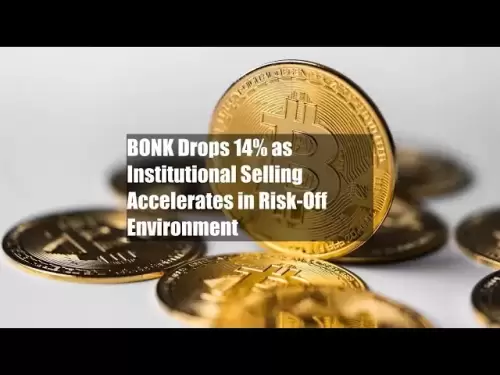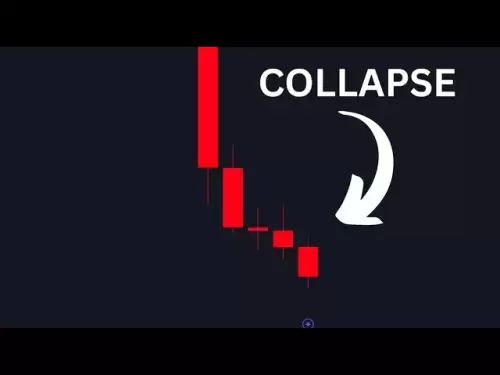-
 Bitcoin
Bitcoin $112400
-1.07% -
 Ethereum
Ethereum $3409
-3.27% -
 XRP
XRP $2.784
-6.60% -
 Tether USDt
Tether USDt $0.9997
-0.03% -
 BNB
BNB $739.3
-2.09% -
 Solana
Solana $158.0
-2.90% -
 USDC
USDC $0.9998
-0.02% -
 TRON
TRON $0.3213
-0.94% -
 Dogecoin
Dogecoin $0.1929
-5.01% -
 Cardano
Cardano $0.6974
-2.82% -
 Hyperliquid
Hyperliquid $36.69
-2.31% -
 Sui
Sui $3.327
-4.80% -
 Stellar
Stellar $0.3672
-5.18% -
 Chainlink
Chainlink $15.65
-3.07% -
 Bitcoin Cash
Bitcoin Cash $525.0
-1.68% -
 Hedera
Hedera $0.2291
-6.00% -
 Avalanche
Avalanche $20.91
-2.96% -
 Ethena USDe
Ethena USDe $1.000
0.00% -
 Toncoin
Toncoin $3.520
-1.12% -
 UNUS SED LEO
UNUS SED LEO $8.968
0.14% -
 Litecoin
Litecoin $105.7
0.26% -
 Shiba Inu
Shiba Inu $0.00001181
-1.79% -
 Polkadot
Polkadot $3.492
-2.08% -
 Uniswap
Uniswap $8.800
-3.10% -
 Dai
Dai $0.9999
-0.01% -
 Monero
Monero $289.9
-3.17% -
 Bitget Token
Bitget Token $4.243
-1.27% -
 Pepe
Pepe $0.00001006
-3.67% -
 Cronos
Cronos $0.1248
-5.68% -
 Aave
Aave $249.7
-2.50%
How to buy Bitcoin ETF through social trading platform?
To buy Bitcoin ETFs via social trading, choose a reputable platform, research traders, copy their trades, and monitor performance while managing risks and fees.
Mar 27, 2025 at 10:43 am
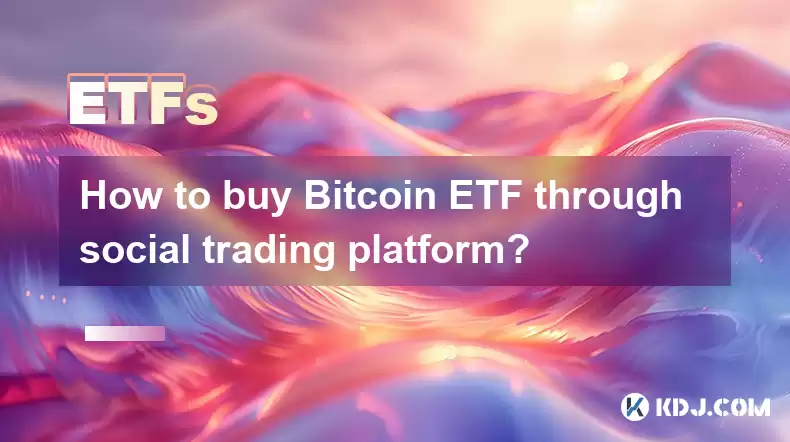
How to Buy Bitcoin ETF Through Social Trading Platforms?
Understanding Bitcoin ETFs and Social Trading
A Bitcoin ETF (Exchange-Traded Fund) is a fund that tracks the price of Bitcoin. Unlike directly buying Bitcoin, an ETF offers a regulated and potentially less volatile way to gain exposure to the cryptocurrency market. This is because ETFs are traded on established exchanges, offering more regulatory oversight than directly holding Bitcoin. Social trading platforms allow you to copy the trades of experienced traders, potentially mitigating some of the risks associated with investing in cryptocurrencies.
Choosing a Suitable Social Trading Platform
Selecting the right platform is crucial. Consider factors like the platform's reputation, regulatory compliance, the fees charged (including trading fees and potential management fees for the copied portfolios), and the range of assets available. Look for platforms with a robust track record and positive user reviews. Ensure the platform offers access to Bitcoin ETFs specifically. Not all platforms offer every asset, and ETF availability can vary.
Identifying Successful Bitcoin ETF Traders
Before copying any trader, thoroughly research their performance. Look beyond simple return figures. Analyze their trading history, risk management strategies, and the consistency of their profits. Pay close attention to drawdown periods – how much did they lose during market downturns? A trader with consistently high returns but also significant drawdowns may be overly risky.
Step-by-Step Guide to Buying Bitcoin ETF via Social Trading
Step 1: Choose a Reputable Social Trading Platform: Research and select a platform that meets your needs and offers access to Bitcoin ETFs. Consider factors like fees, regulatory compliance, and the platform's user interface.
Step 2: Create an Account: Register an account on the chosen platform, providing the necessary personal and financial information. This usually involves verification processes to comply with Know Your Customer (KYC) and Anti-Money Laundering (AML) regulations.
Step 3: Fund Your Account: Deposit funds into your trading account using one of the platform's accepted payment methods. Ensure you understand the minimum deposit requirements.
Step 4: Find Bitcoin ETF Traders: Use the platform's search tools to identify traders who specialize in Bitcoin ETFs and have a proven track record. Analyze their trading history and risk profiles carefully.
Step 5: Copy a Trader: Once you've found a suitable trader, select the option to copy their trades. Start with a small amount to test the waters before committing significant capital.
Step 6: Monitor Your Investments: Regularly monitor your investment performance and the performance of the trader you're copying. Be prepared to adjust your strategy if necessary.
Understanding the Risks Involved
Social trading, like any investment, carries inherent risks. Past performance is not indicative of future results. Even the most successful traders can experience losses. The performance of the trader you copy directly impacts your investment, so carefully assess the risks before investing. Also, be aware of the fees charged by the social trading platform and the underlying ETF.
Diversification and Risk Management
Never invest all your funds in a single trader or asset. Diversification is crucial in mitigating risk. Consider copying multiple traders with different strategies to spread your investment across various approaches. Always set stop-loss orders to limit potential losses.
Regulatory Considerations
The regulatory landscape for cryptocurrencies and social trading platforms is constantly evolving. Ensure the platform you choose is compliant with relevant regulations in your jurisdiction. This is crucial to protect your investments and avoid legal issues. Understand the tax implications of your investments, as cryptocurrency trading often has specific tax rules.
Security Measures
Security is paramount when dealing with cryptocurrency investments. Choose platforms with robust security measures, including two-factor authentication and encryption. Protect your login credentials and avoid sharing sensitive information. Regularly review your account activity for any suspicious transactions.
Fees and Charges
Social trading platforms typically charge fees for their services. These can include trading fees, subscription fees, or management fees for copied portfolios. Carefully review the fee structure before committing to a platform. Understand how these fees can impact your overall returns. Also, be aware of any fees associated with the Bitcoin ETF itself.
Customer Support
Access to reliable customer support is vital. Choose a platform with responsive and helpful customer support channels. This is especially important if you encounter any issues or have questions about the platform or your investments.
Frequently Asked Questions
Q: Are Bitcoin ETFs available on all social trading platforms?
A: No, not all social trading platforms offer access to Bitcoin ETFs. Availability varies depending on the platform and its regulatory approvals.
Q: How safe is social trading?
A: Social trading carries inherent risks, as your investment's success depends on the performance of the trader you copy. While platforms offer a degree of security, it's crucial to manage your risk and diversify your investments.
Q: What are the fees involved in using a social trading platform for Bitcoin ETFs?
A: Fees vary by platform. Common fees include trading fees, platform subscription fees, and potentially management fees for copied portfolios. Check the platform's fee structure before investing.
Q: Can I lose money using a social trading platform for Bitcoin ETFs?
A: Yes, there is a risk of losing money. Even experienced traders can experience losses, and the performance of the trader you copy directly impacts your investment. Risk management is crucial.
Q: How do I choose a successful trader to copy?
A: Analyze their trading history, focusing on consistency, risk management, and drawdown periods. Don't solely rely on high returns; consider the overall risk profile and the trader's strategy.
Disclaimer:info@kdj.com
The information provided is not trading advice. kdj.com does not assume any responsibility for any investments made based on the information provided in this article. Cryptocurrencies are highly volatile and it is highly recommended that you invest with caution after thorough research!
If you believe that the content used on this website infringes your copyright, please contact us immediately (info@kdj.com) and we will delete it promptly.
- Ruvi AI: The AI Token on Cardano Set to Dominate After CMC Listing
- 2025-08-03 04:50:12
- Altcoins in the Spotlight: Cardano, Shiba Inu, and the Quest for Crypto Supremacy
- 2025-08-03 05:30:12
- Litecoin, USDC, and Mining in 2025: A New Yorker's Take
- 2025-08-03 05:50:12
- Bitcoin, MicroStrategy, and Institutional Confidence: A Bullish Trifecta?
- 2025-08-03 04:30:12
- Ruvi AI Token: Price Hike Imminent After Presale Milestone?
- 2025-08-03 04:30:12
- Ruvi AI: The Millionaire Maker with a Price Spike on the Horizon?
- 2025-08-03 02:50:12
Related knowledge
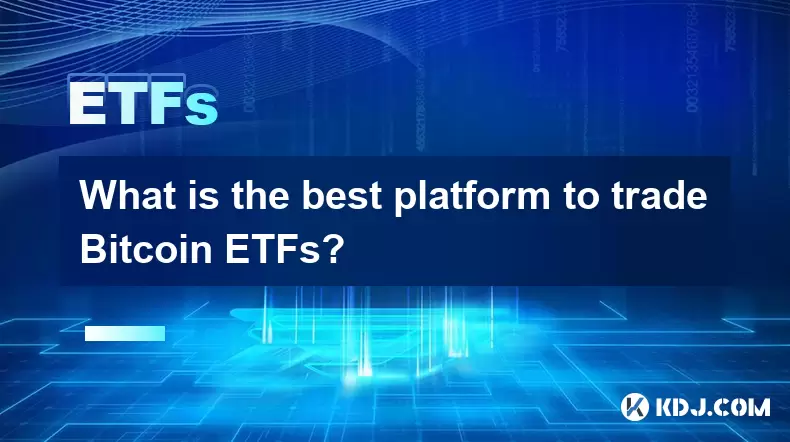
What is the best platform to trade Bitcoin ETFs?
Jul 23,2025 at 04:14am
Understanding Bitcoin ETFs and Their Role in TradingBitcoin Exchange-Traded Funds (ETFs) have gained significant traction among traditional and crypto...
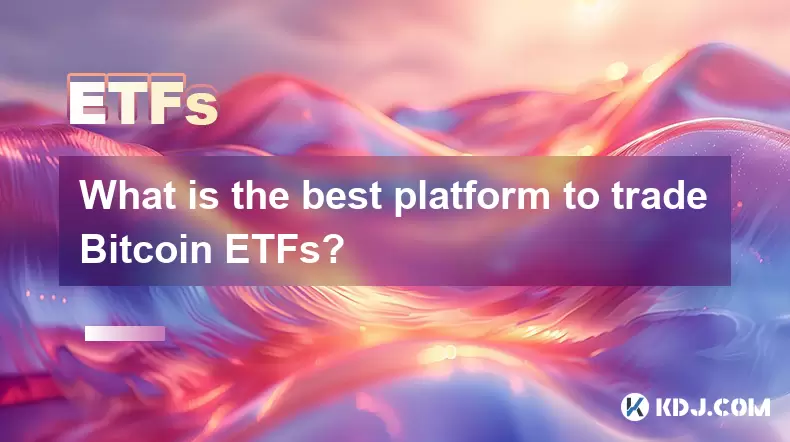
What is the best platform to trade Bitcoin ETFs?
Jul 17,2025 at 03:50pm
Understanding Bitcoin ETFs and Their Role in the MarketBitcoin Exchange-Traded Funds (ETFs) are investment vehicles that track the price of Bitcoin wi...

Will a Bitcoin ETF be available in my 401(k)?
Jul 17,2025 at 10:42pm
What is a Bitcoin ETF?A Bitcoin ETF (Exchange-Traded Fund) is an investment vehicle that tracks the price of Bitcoin without requiring investors to di...
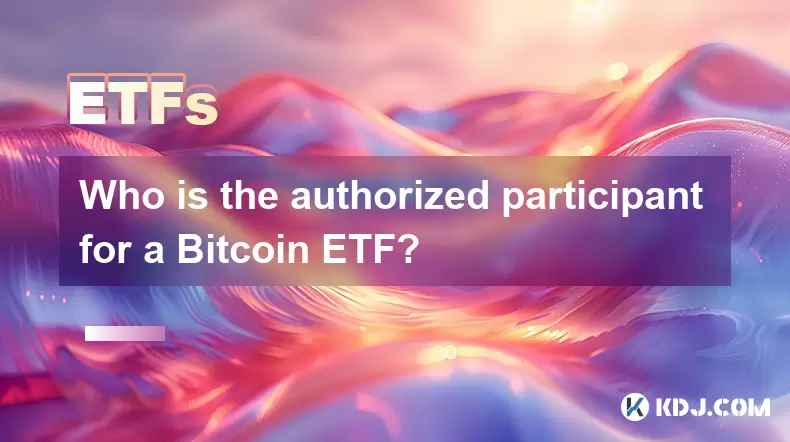
Who is the authorized participant for a Bitcoin ETF?
Jul 18,2025 at 12:42am
Understanding the Role of Authorized Participants in Bitcoin ETFsIn the context of Bitcoin Exchange-Traded Funds (ETFs), an authorized participant (AP...
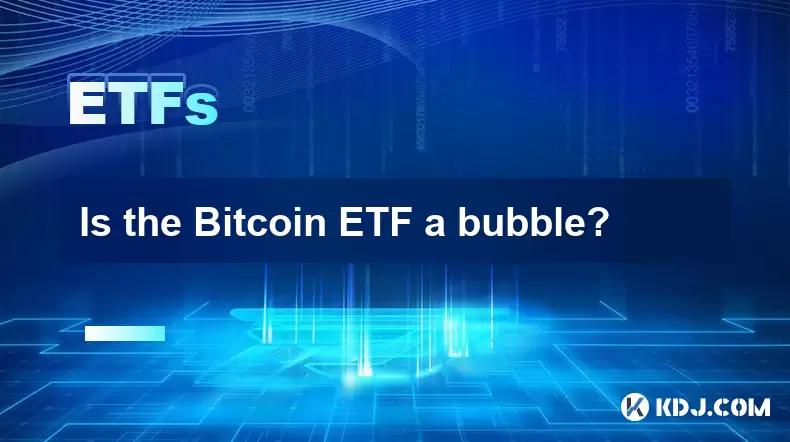
Is the Bitcoin ETF a bubble?
Jul 20,2025 at 06:57am
Understanding the Bitcoin ETF ConceptA Bitcoin Exchange-Traded Fund (ETF) is a financial product that aims to track the price of Bitcoin without requi...
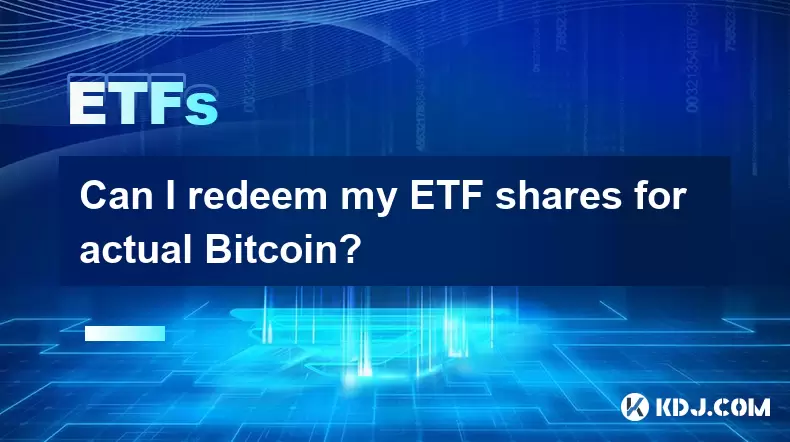
Can I redeem my ETF shares for actual Bitcoin?
Jul 17,2025 at 03:14pm
Understanding ETF Shares and Their Relation to BitcoinExchange-Traded Funds (ETFs) have become a popular investment vehicle for those looking to gain ...

What is the best platform to trade Bitcoin ETFs?
Jul 23,2025 at 04:14am
Understanding Bitcoin ETFs and Their Role in TradingBitcoin Exchange-Traded Funds (ETFs) have gained significant traction among traditional and crypto...

What is the best platform to trade Bitcoin ETFs?
Jul 17,2025 at 03:50pm
Understanding Bitcoin ETFs and Their Role in the MarketBitcoin Exchange-Traded Funds (ETFs) are investment vehicles that track the price of Bitcoin wi...

Will a Bitcoin ETF be available in my 401(k)?
Jul 17,2025 at 10:42pm
What is a Bitcoin ETF?A Bitcoin ETF (Exchange-Traded Fund) is an investment vehicle that tracks the price of Bitcoin without requiring investors to di...

Who is the authorized participant for a Bitcoin ETF?
Jul 18,2025 at 12:42am
Understanding the Role of Authorized Participants in Bitcoin ETFsIn the context of Bitcoin Exchange-Traded Funds (ETFs), an authorized participant (AP...

Is the Bitcoin ETF a bubble?
Jul 20,2025 at 06:57am
Understanding the Bitcoin ETF ConceptA Bitcoin Exchange-Traded Fund (ETF) is a financial product that aims to track the price of Bitcoin without requi...

Can I redeem my ETF shares for actual Bitcoin?
Jul 17,2025 at 03:14pm
Understanding ETF Shares and Their Relation to BitcoinExchange-Traded Funds (ETFs) have become a popular investment vehicle for those looking to gain ...
See all articles





















